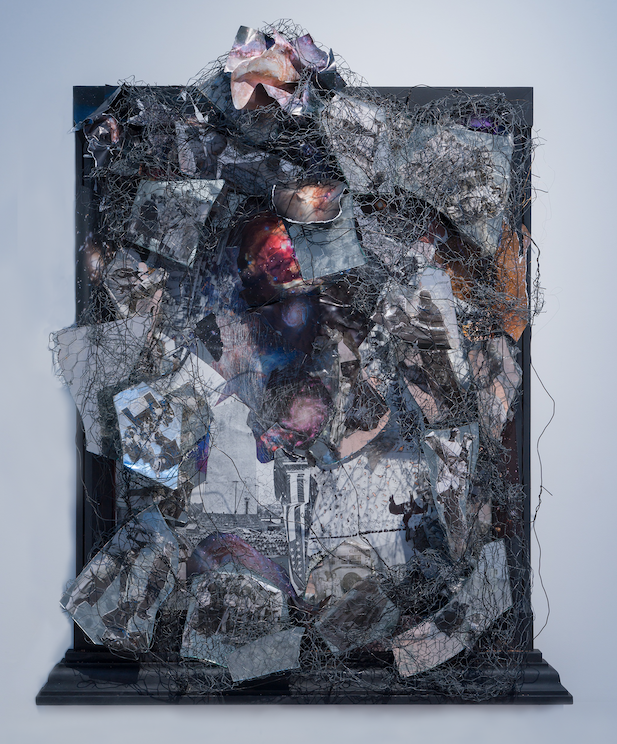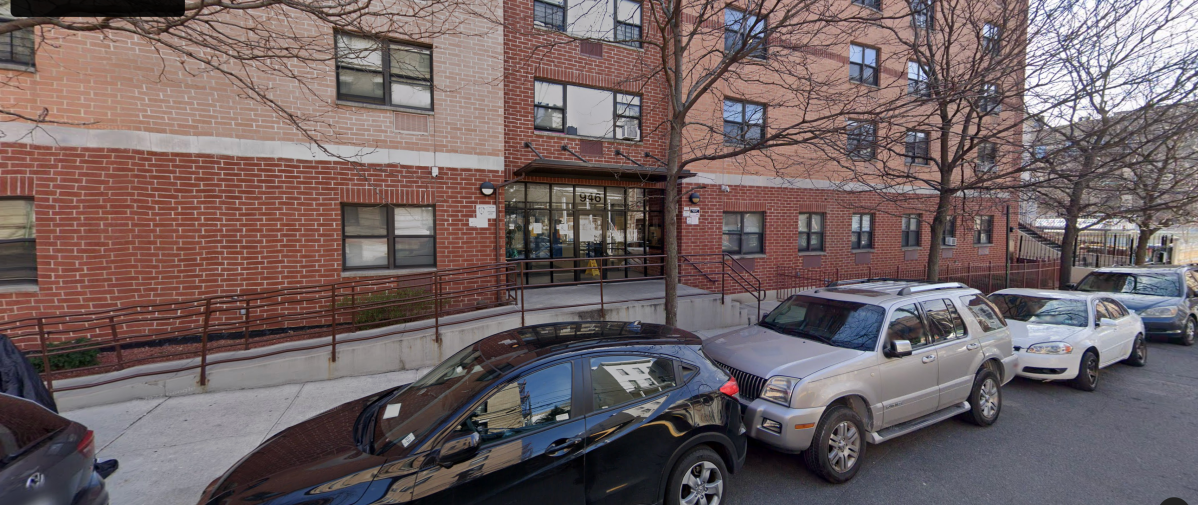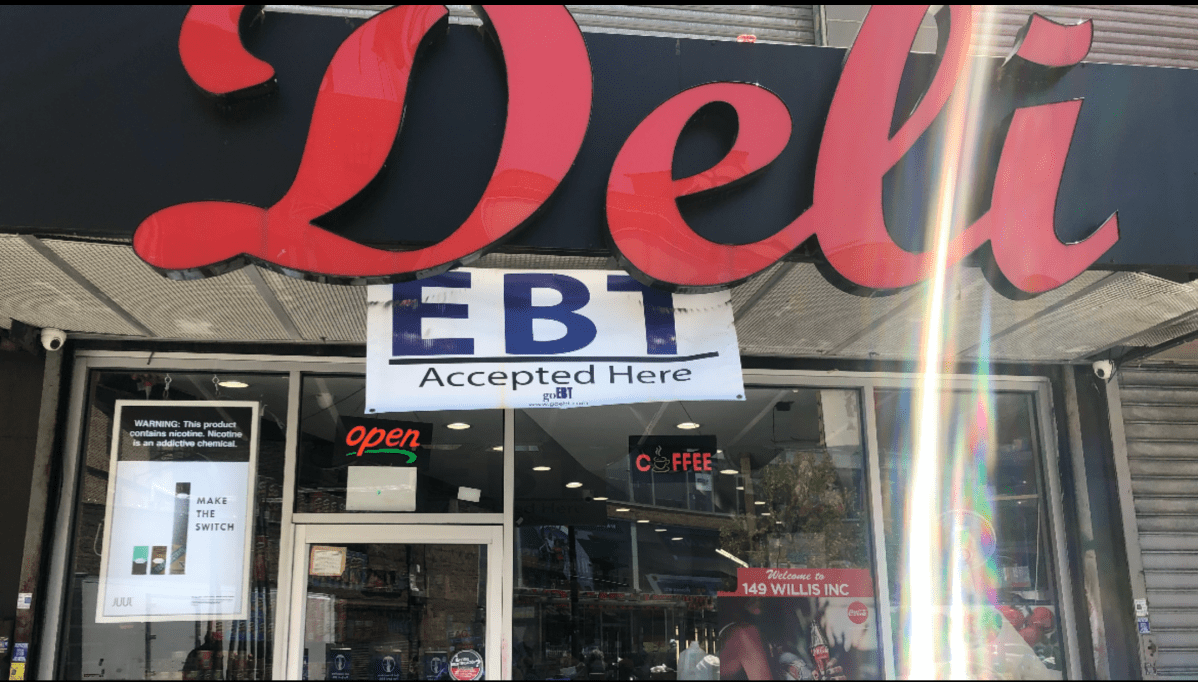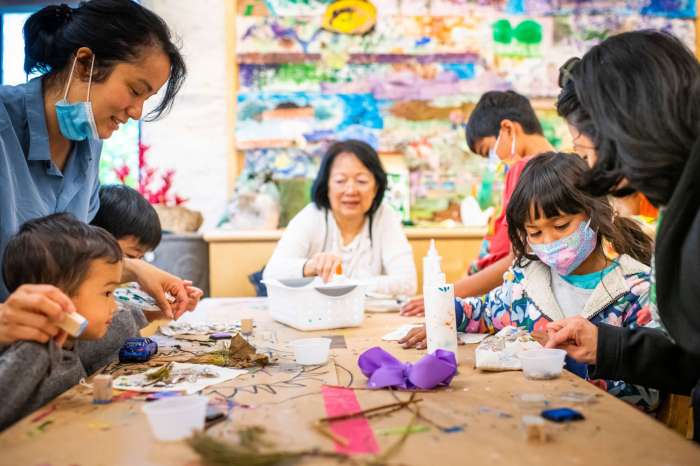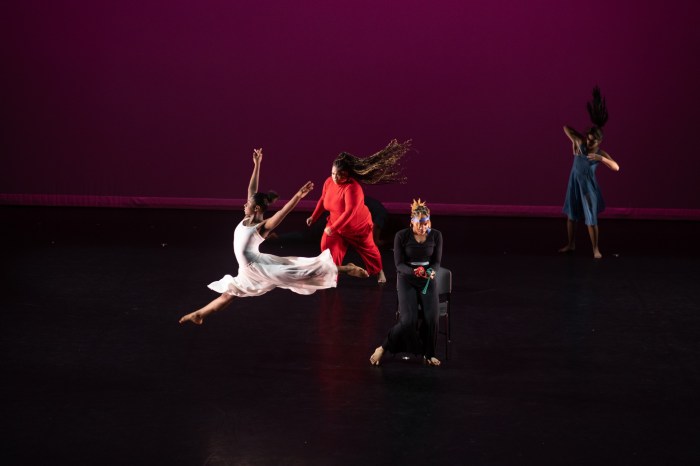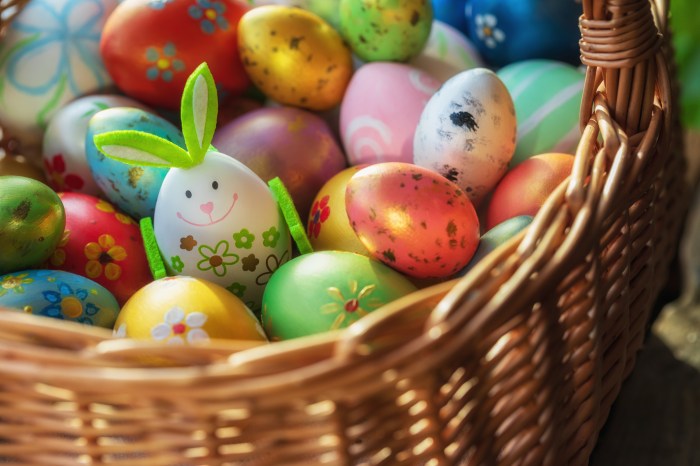Against the Grain: The Stories We Tell Ourselves, an exhibition at the Longwood Art Gallery at Hostos, showcases a collection of contemporary artists and presents their work as an exploration of memory, time and storytelling. The pieces on display cover a wide range of media, from sculpture to paintings and beyond.
Dana Notine, curator of the exhibition, explained to the Bronx Times that the process of bringing this exhibition to life began a year ago, when she responded to an open call from the Longwood Art Gallery. The open call was focused in on looking for exhibitions related to the phrase “against the grain” and Notine took that idea and created a story with it.
“The way that I interpreted that was to go against the grain when it comes to thinking about memory or looking at an archive is sort of about scratching beyond the surface of what the most obvious narrative might be,” said Notine. “With that as a jumping off point, I began to think about artists that I knew that created deeply personal works that excavated their own memories, stories about their memory, and artists that produced archival work.”
Notine explained that the exhibition’s theme began to hone in on the idea of questioning stories that we’re told and noticing what goes into the way that we make sense about the world around us. This is ingrained even within the exhibition’s title, Against the Grain: The Stories We Tell Ourselves, which is a reference to Joan Didion’s work that explained storytelling as a way we rationalize memory in order to live.
“We’re really thinking about how we, ourselves, keep track of the events that happen in our lives,” said Notine. “We’re just constantly trying to make sense of it, and there’s something deeply human and relatable about that idea.”
“My work has always dealt with narrative, storytelling and the archive,” said Bryan Zanisnik, a participating artist in the exhibition. “When Dana invited me to participate in the exhibition, I thought the theme was a perfect fit for my work.”
Kathleen Granados, another participating artist at the exhibition, is an interdisciplinary artist whose work is tied together as different explorations of home, prompted through anything that could be traced back to personal memory or history.
“That could be from a specific crochet stitch my grandmother used or a family story,” said Granados. “I think a lot about inherited histories and this idea of memory and its ambiguities, but also how it’s always present in our everyday lives.”
Another participating artist, Peter Hoffmeister, also said that he centers his work around history and memory. For one of his pieces in this exhibition, he took a very physical approach to examining this idea.
“I’ll go to the site of former brick works, harvest clay, make molds from the bricks I find there and then cast that clay into those molds and make what I refer to as ‘impostor bricks’ or ‘anti-bricks,’” said Hoffmeister.
The product of this excavation and transformation is a series of hollow bricks masquerading as legitimate ones.
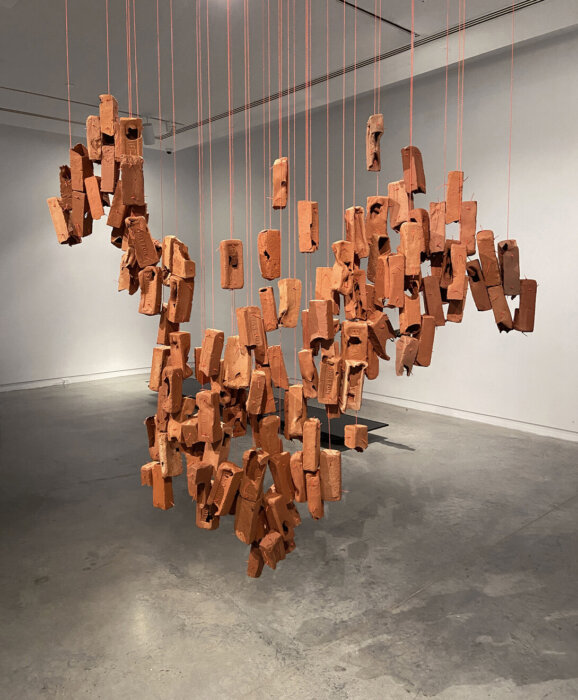
“The usual cultural association of bricks is one of strength and stability, but I was thinking about undermining that and creating something that’s more fragile and vulnerable, almost as if these structural units were hollow all along,” said Hoffmeister.
Participating artist E Lombardo hones in on visual art through processes such as screen printing in relation to the consumption of media and the stories that are consumed by the public.
“What I kept noticing as a kid was all of these narratives that everyone was consuming – in comedies, dramas – they were all telling me that if I was a woman, I was a joke and I did not have agency over my body,” said Lombardo.
Lombardo explores media by including frames of TV shows and movies from the ’80s and ’90s as a means of reclaiming power in femininity.
Fellow participating artist Topher Lineberry created a video interview with their father that illustrates palpable tension between familial dynamics and institutions – particularly honing on the relationship between those two ideas in a method they call “kin-stitutional critique.”
Lineberry focused on the question of how family and kinship create its own kind of institution and how different institutions reciprocally affect family and kinship.
Karewith Casas, another participating artist, also considers the intersection of different ideas in his art: namely, the intersection between art, poetry, music, and painting, through examinations in abstraction and color.
For Casas, these relationships are reciprocal and inseparable. He hones in on this idea by his portrait paintings of family members, in order to think about how love intertwines through families in addition to thoughts regarding the role of motherhood in a family.
“It is really an honor to help spread the artists’ work in the small way that I can,” said Notine.
Emily Shanahan, participating artist, wrote in an email to the Bronx Times that her work largely aims to address topics such as gendered labor and technology, and often explores behaviors associated with a female workforce, such as adaptability, cooperation and emotional intelligence, which allowed her work to fit right into the topics under examination in this exhibition.
The Longwood Gallery is also currently having an open call for an art residency on Governors Island, which members of the Bronx Council of the Arts emphasized as a great opportunity for Bronx artists.
The exhibition will be running until Feb. 21, 2024.
The Longwood Art Gallery at Hostos is located at 450 Grand Concourse. For more information, visit hostos.cuny.edu/culturearts/events/exhibits.shtml.
For more coverage, follow us on Twitter, Facebook and Instagram @bronxtimes

